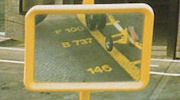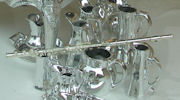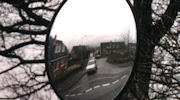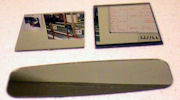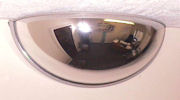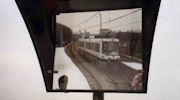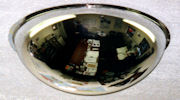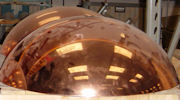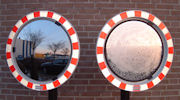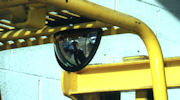| mirror technology Safety, Security and Specialised Mirrors |
01242 621534 |
|
Aircraft Docking |
Decorative Coating |
Driveways |
Flat Sheet |
Secure Accomodation |
|
Rail Platform |
Security |
Special Projects |
Traffic Safety |
Vehicle Safety |
Our ProcessesMirror Technology has a wide variety of industrial processes at its disposal. All of our products are designed and built in the UK at our factory in Toddington. Vacuum MetallisationVacuum metallisation is the process used for creating a mirror effect on any material. The target material is placed in a vacuum vessel. The air is pumped out of the vessel down to 1 millionth of an atmosphere. Once there are very few air particles left in the chamber a high current is passed through a set of evaporation wires or crucibles. They glow white hot and melt the target metal in them until it evaporates. As there are no other particles to collide with the metal streams out from the crucible or wire and condenses on the first surface it meets, including the target item. Air is let back in once the evaporation is complete and the target item is coated in aluminium for a silver effect, but also gold, copper or other materials. For a mirror effect the surface must be high gloss, scratch and fingerprint free and adhere to aluminium. The coating myst be protected as it is very fragile (with a paint or laquer coat). If you are considering something for coating review this Notes On The Metallizing Process. Blow MouldingBlow moulding is used to create perfect domes from acrylic or polycarbonate. The plastic is heated unitl soft and then air is blown underneath it whilst the edges are clamped down. The plastic bubbles up and laser systems hold the height of the dome while it cools. Using this process the plastic is not touched by a mould allowing for a defect free surface ready for mirroring. Vacuum FormingVacuum forming is used to create the backs and other components of products in Mirror Technologies portfolio. The process uses heated and softened ABS which is pulled by a vacuum over a mould. This creates all sorts of shapes and the moulds can be made on site by the CNC machines. CNC MachiningUSed for two main purposes the CNC machines can cut flat or moulded plastic to any shape required and also create 3D moulds for the vacuum former. The use of computer control provides for accurate repeatability and quality.
|
©Mirror Technology Ltd. 2012 |
|
